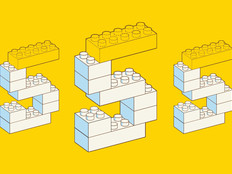What Are Smart Buildings and Why Do Colleges Need Them?
Daniel Schieber, innovation lead in the office of the CTO at Extreme Networks, is in the business of leveraging wireless, wired, cloud and fabric solutions to help higher education institutions around the world get a little bit smarter, including North Carolina Agricultural and Technical State University, San Diego Community College District, the University of Bern and Baylor University.
“They now have the infrastructure necessary to take steps toward becoming smart campuses while supporting more students, more devices and more hybrid learning options,” he says.
“A smart building is any building that uses technology inherently in operations, from building management to lighting systems to HVAC, to create a safe, comfortable environment for occupants,” Schieber says. “These integrated systems can also be improved through automatic workflows built on contextual information and historical patterns, enabling continuous, personalized experiences for building occupants no matter where they are in the building.”
A smart residence hall might look much different from a smart stadium, as each space’s version of smart varies by building type and use.
How Are Universities Using Smart Building Technologies?
Some universities are starting with the basics. Others are already tracking trash production in dining halls to communicate which cans need to be emptied and when. This saves time and money, says Andrew Rettig, an Internet of Things (IoT) coordinator and assistant professor at Sinclair College. He is also the founder of Lil Data Monster, a consulting company that has advised universities including the University of Dayton on integrating smart campus technologies.
Rettig says that smart building technologies often deal with either occupancy or facilities. He adds that occupancy is connected to security.
“Occupancy is people in there and the heating, cooling and lights. But facilities are how much use it’s getting, the traffic, getting into areas how often we clean the bathrooms based on how much traffic is going through them, and into monitoring specific things like fire extinguisher monitors, if someone’s opening them, if they’ve been used, etc.,” Rettig says.
RELATED: How to configure and test a new wireless network deployment on campus.
Why Students of the Future Will Want Smart Buildings
All students love a super cool tech feature. But smart buildings go way beyond impressive software and flashy new tools. They will be a matter of health and wellness, a top-of-mind focus for Generation Z.
Jeff Millard, director of Cincinnati operations at engineering firm CMTA, says that smart building features will impact higher education institutions in terms of health and wellness. Energy conservation will benefit the university’s bottom line and attract students with an eye on sustainability and responsible energy use.
“Smart buildings can monitor systems and conditions like indoor air quality and, if needed, adjust the settings to provide better conditions for occupancy. Better air quality can help better learning outcomes,” Millard says.
In addition, smart buildings can calculate optimal lighting, also beneficial for learning and health. “There is no better example of this than with natural light,” he says. “Artificial lighting can simulate the full spectrum and color of natural lighting and change throughout the day, again helping the occupants of the building learn and live within them.”
In the classroom of the future, nobody need to manually adjust the shades.
AI Is Powering Smart Buildings in Higher Education
Artificial intelligence is the backbone of these upgrades.
“AI can be a real game changer for smart buildings. Predictive analytics can help create a more personalized experience, ensuring that user preferences are consistent from room to room. Think lighting, temperature control, etc.,” Schieber says.
It can reduce false alarms and make recommendations on how to resolve confirmed issues, he says.
“This helps IT teams save time and enables a faster time to resolution. In a smart building, where everything relies on the network and management and visibility can quickly become time-consuming and complex, having an AI-powered network management platform can be invaluable.”











